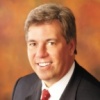With the opening of the Peoria NEXT Innovation Center, new local businesses will benefit from the latest in lab and information technology and will be able to utilize these services at a significantly lower cost than if they had to build the facilities on their own. The Heartland Partnership’s cooperative and regional approach to economic development has been applied to this incubator model so that not only is the community working together for growth, but small start-up businesses are working together for growth as well.
The Innovation Center is just the beginning. As these businesses grow and succeed, they will move from the Peoria NEXT facility so other young start-ups can utilize the incubator. With that, we will have an abundance of businesses looking to move into other high-tech facilities in the area. Unfortunately such “technology parks” do not exist in our region.
Coast to coast, other communities have begun to develop commercial parks that focus on the development and growth of established companies in the technology and research and development fields. Silicon Valley is one such place, while another is the research triangle in the Raleigh-Durham region. These areas have built themselves up to become high-tech hubs where companies will locate based on their reputations alone.
Here in central Illinois, we have the tools to become such a region. With the research underway at businesses like Caterpillar, eServ, Firefly and institutions like the NCAUR Ag Lab, Bradley University and the University of Illinois College of Medicine at Peoria, we already have the potential.
What we need now is a commitment from community leaders and developers to make it happen. We don’t fashion ourselves to become the Silicon Valley of the Midwest, but we do see the potential to create a hub for high-tech businesses in our region that is unique to central Illinois, with the potential to draw and retain businesses for the future prosperity of the region. IBI

